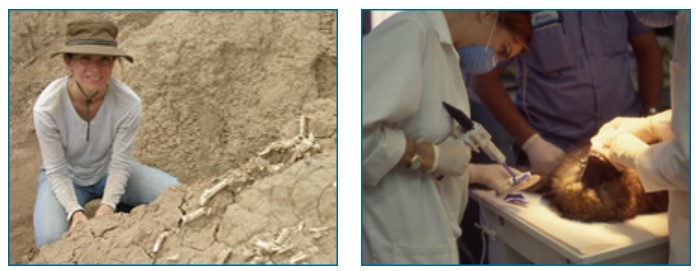The work of Leslea Hlusko
by the Understanding Evolution team
Dr. Leslea Hlusko, a professor at UC Berkeley, is a member of a key research project in human evolution. The team has found some of the earliest hominid fossils and, with them, has put forth a bold hypothesis — that Ardipithecus ramidus and Australopithecus anamensis — are not just two branches on the bushy tree of human relatives, but are instead a single lineage, with Ard. ramidus evolving directly into Au. anamensis.
The flipside of Leslea’s research, however, lands her about as far as one can get from prospecting for four million year old hominid fossils in Ethiopia. Her alter ego spends its energy taking thousands of incredibly detailed measurements of teeth belonging to a colony of baboons at a hi-tech biomedical research facility in San Antonio, Texas.

What’s the connection between ancient hominid fossils and meticulous studies of modern baboon teeth? To find out, read on…
In this research profile, we will explore these key questions:
- What are the sources of variation in physical traits within a population?
- How does genetic variation influence a population's ability to evolve through natural selection?
- Why is it important to understand the variation in an extinct species when studying its fossils?
Get tips for using research profiles, like this one, with your students.
